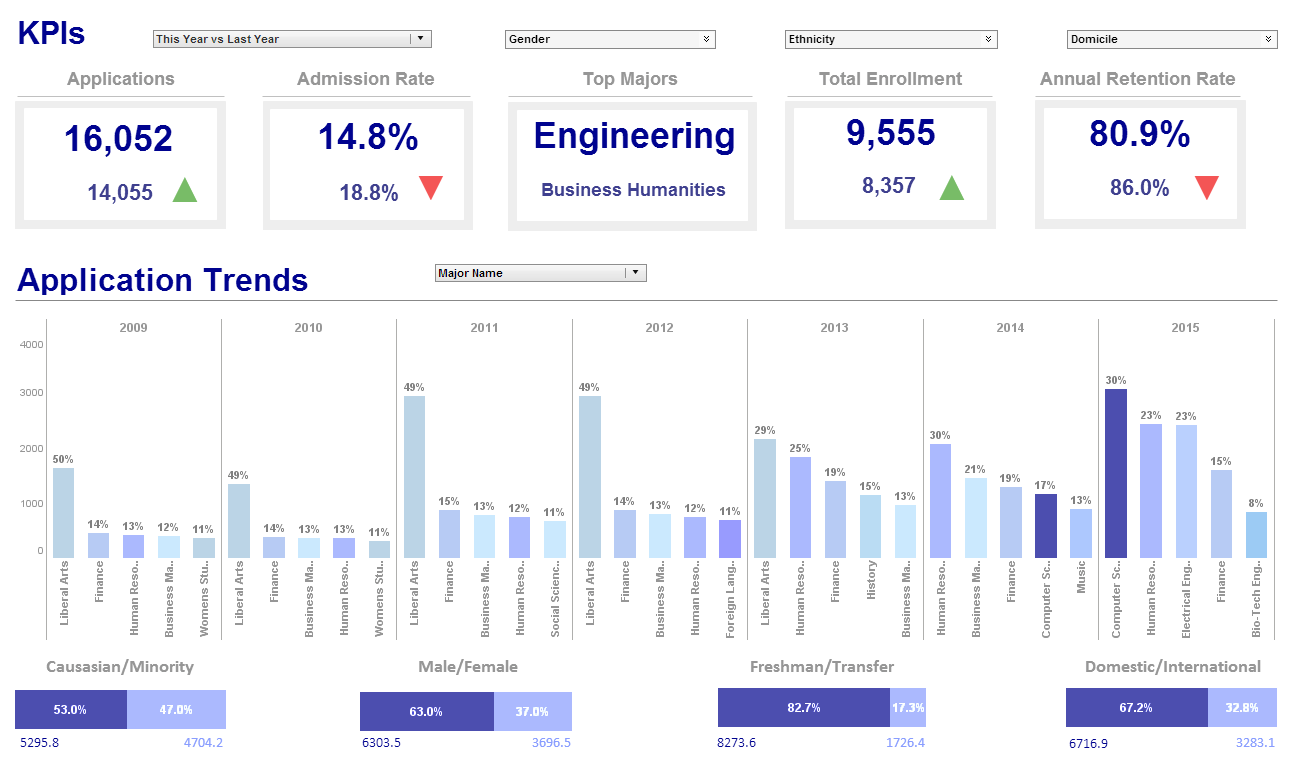InetSoft Seminar: Analyze Management Performance
This is the continuation of the transcript of an in-person customer seminar hosted by InetSoft on the topic of "How Performance Management Consultants Work." The speaker is Christopher Wren, Principal Consultant at TFI Consulting.
Here is the thing you learn when you analyze management performance. You have got the top-level echelon there, and they are sitting in a little glasshouse, and they think everything is great, right, that’s a typical classical scenario. And then you have the staff down there at the very bottom, and you know, they are hands-on everyday with that equipment and whatever, and they know the stuff is just falling apart. It’s a complete disconnect.
This is a tool to identify the disconnects. The scores can be separated by the different stakeholders. And areas where you have large disconnects, where there are completely different beliefs among the different stakeholders, guess what, you cannot implement any change in that area unless you first get all of these groups to agree that there is a real need to work in that area.
That means they all believe the same things, and they all believe that they are equally good or equally bad at that. You can’t move forward because even if the top executives believe there is a change needed, hey, they are going to run into resistance if the bottom of that organization does not believe there is a need for that. So it’s going to be one of those mandates that never gets executed. So, it’s another tool that we look at.

 |
View a 2-minute demo of InetSoft's easy, agile, and robust BI software. |
Another one that we look at is concerns and confidence of an organization. It’s a part of the assessment. I am a really negative person so I might tend to score everything on a 0 to 4, and Mike here, he is a real positive person; he scores everything on a 6 to 10, right. So Mike’s 10 is the same as my 4. So through some mathematics and through some statistics that I don’t want to bore you with, we go in there, and we find out all these scores.
We normalize it to the same belief scale, and we identify then the standard variation from the standard mean of each of the scores. It’s very scientific, right? What it gives you though in the end is a chart that shows you clearly where the organization believes they are very confident. That’s way out above the line.
Sometimes if this is a very large spike, they may be overconfident and they may be in danger of at some point running behind. In other areas, where you are below this red line, they are very concerned about that, okay. So here is the thing.
If they score themselves low on one of these areas, they have a real concern about it, guess what, that’s a very good target to implement a change first. Everyone believes they need a change. Everyone is very concerned about it, and guess what, you are going to find that whole group is ready to move on and to change it, which is a good thing because you know what, when you are doing these changes, you don’t want to run into roadblocks that essentially negate the success.
 |
View live interactive examples in InetSoft's dashboard and visualization gallery. |
So when you put it all together, we use red, green, white, and yellow for colors. We have this large size roadmap. This is essentially a roadmap for that organization. And what it shows you is those areas where they are strong, which are shown in green, classic traffic light approach. Those areas where they are competent, where they are not really strong in it, but you know what, there are no real gaps either; those areas where there is an opportunity to do better and we use positive words, of course, right?
Then comes those areas where there is a real challenge to the organization. Those are issues that they may have to address. So here is a complete picture of that organization. Now the group consisting of leadership and managers and staff, now they can go here and say, okay, we have this one here, here, here, and here, which ones of these do we want to work on first?
And you go for that whole process in a workshop, and you say, okay, what’s the impact if we cannot address that? What’s the impact if we can address it? And you essentially go for a prioritization exercise because by all means there is no way that any organization today in this business environment has enough resources to address all of the reds at any one time. So you have got to pick and choose. You have got to pick your battles, and win it one time at a time.
 |
Read why choosing InetSoft's cloud-flexible BI provides advantages over other BI options. |
We also look at organizational skills and knowledge in some more detail. There are many organizations that have position descriptions and job descriptions that are canned. Many times they are written by HR with complete lack of knowledge or what really is entailed in the position. Very few organizations have actually a very sound position description that describes not only what the roles and responsibilities are but also how you are going to be held accountable, and also show what skills and knowledge you may have.
So here are your skills and knowledge. Here is a technical leadership administration and safety type, and then here are the positions within the organization, all the way from the CEO all the way down to the janitor, and that shouldn’t be little janitors. And essentially you are going to map here what are the skills that they need to fulfill their job successfully.
| Previous: Conduct a Performance Analysis Workshop |